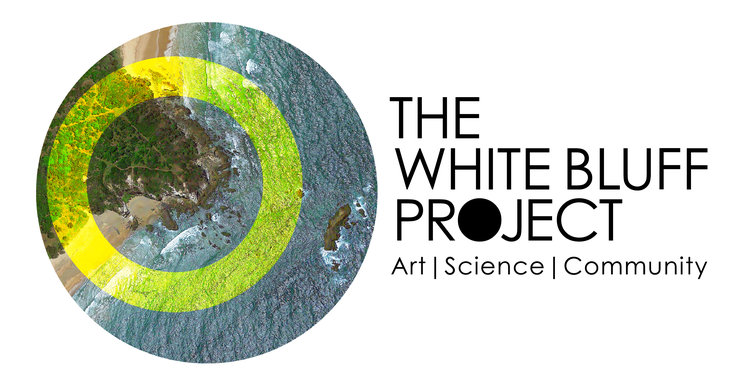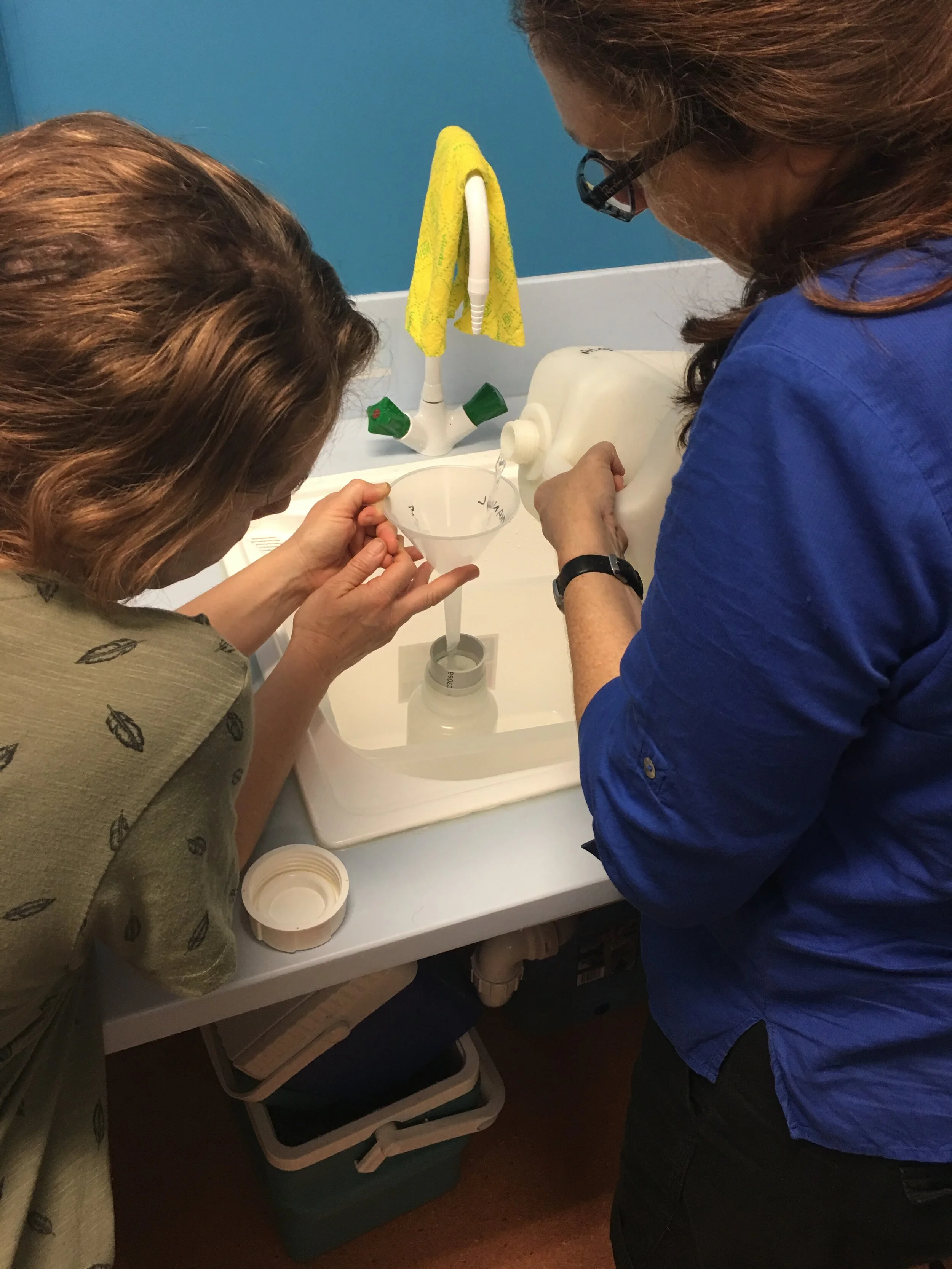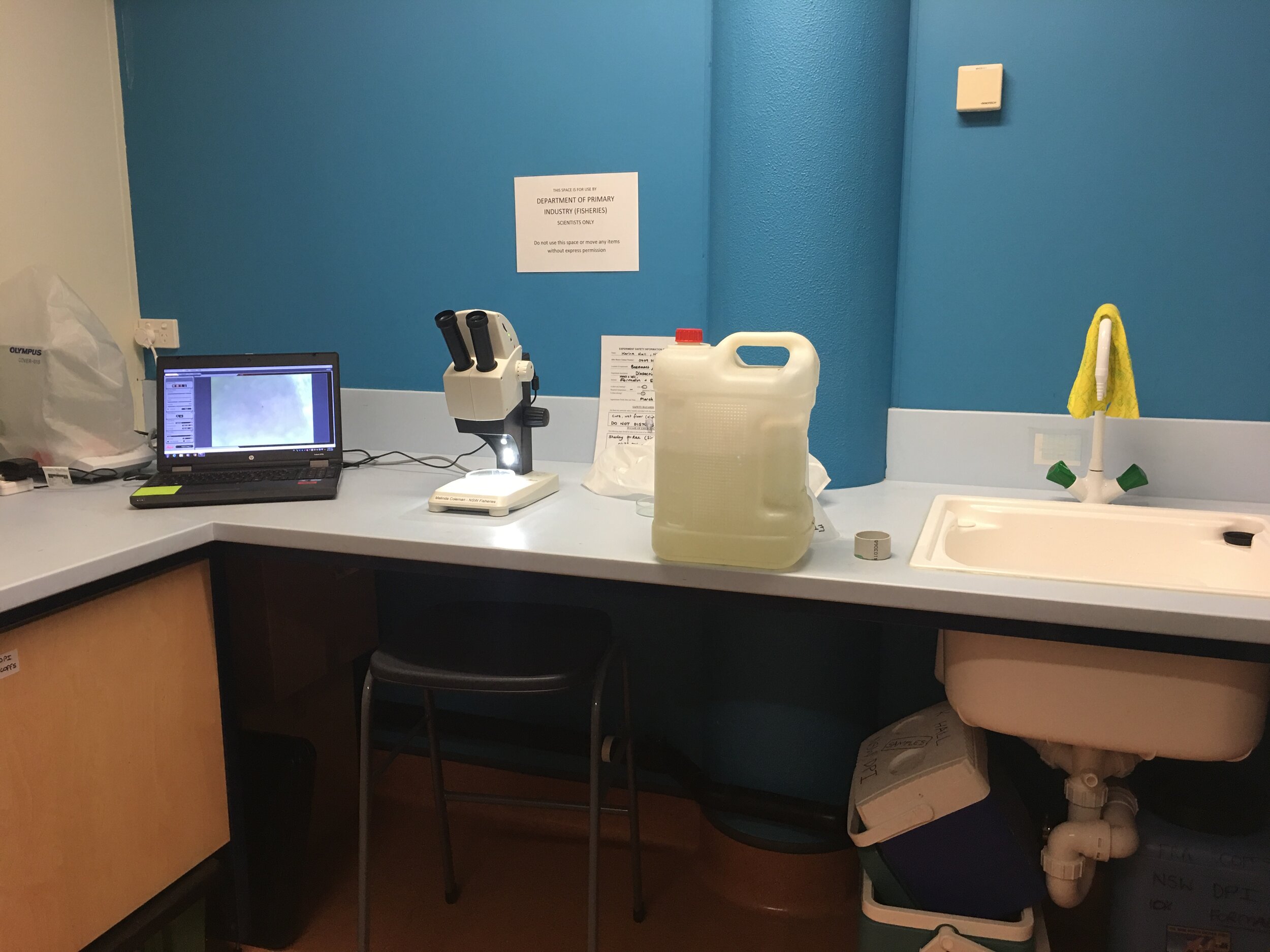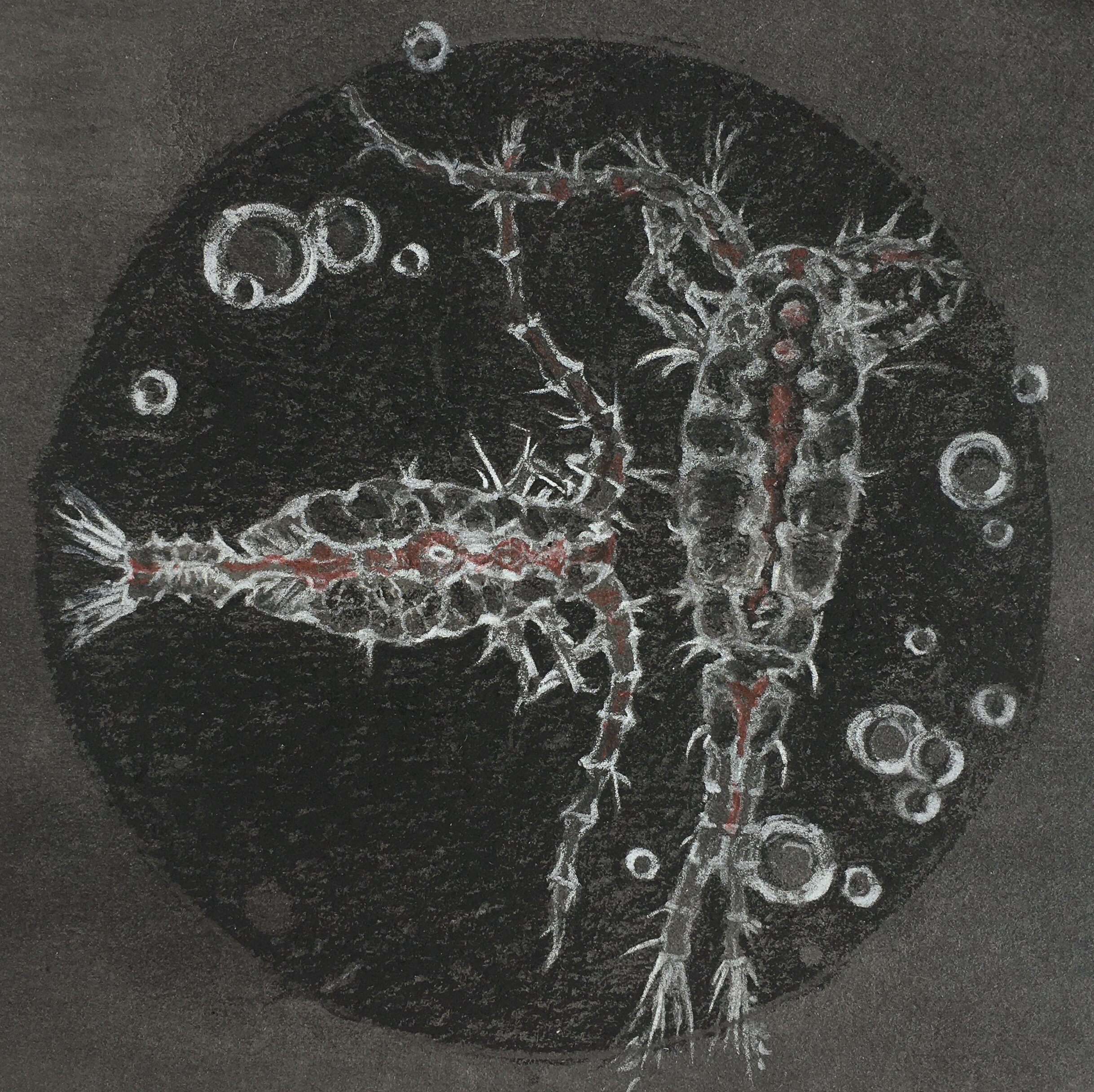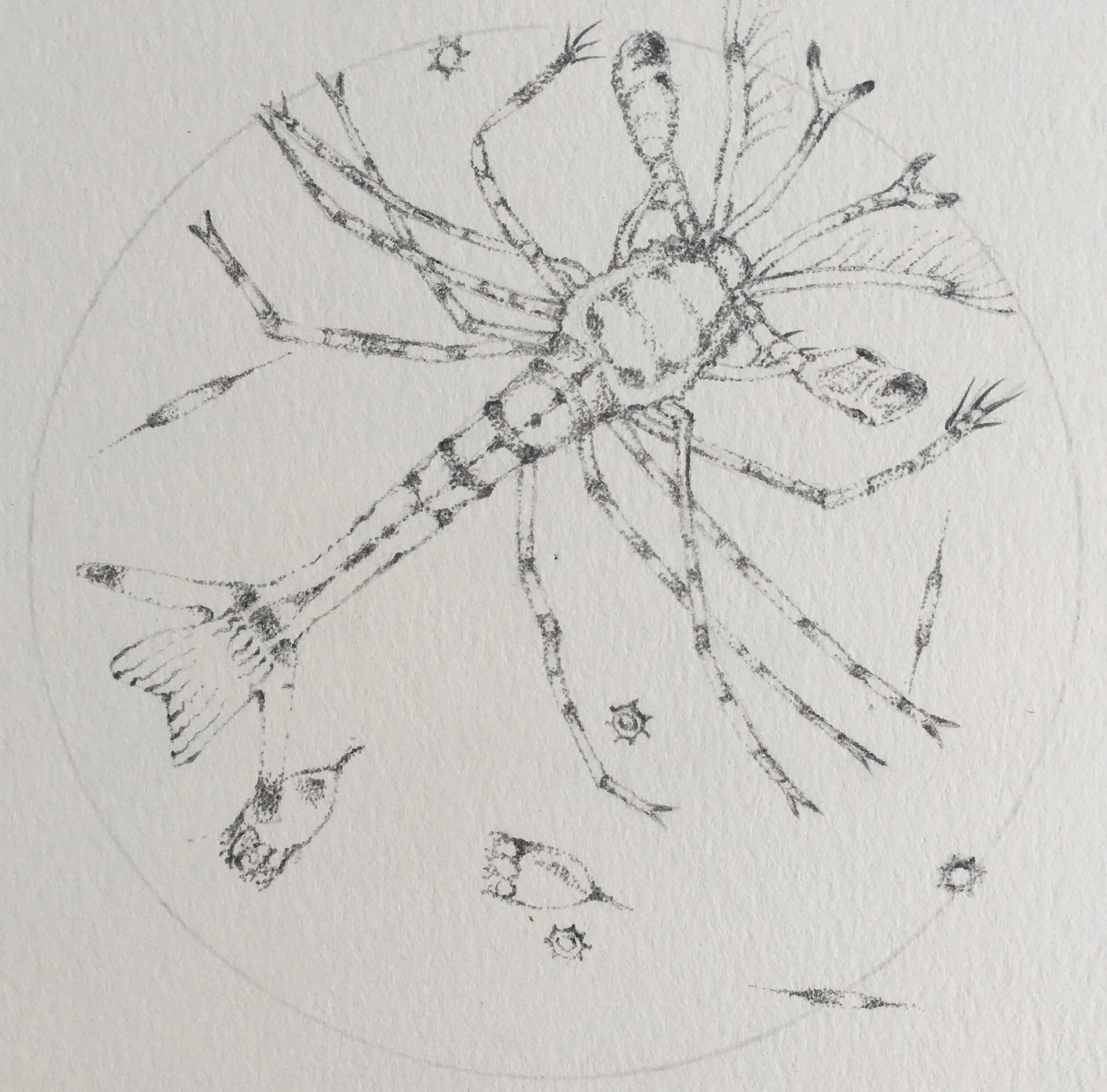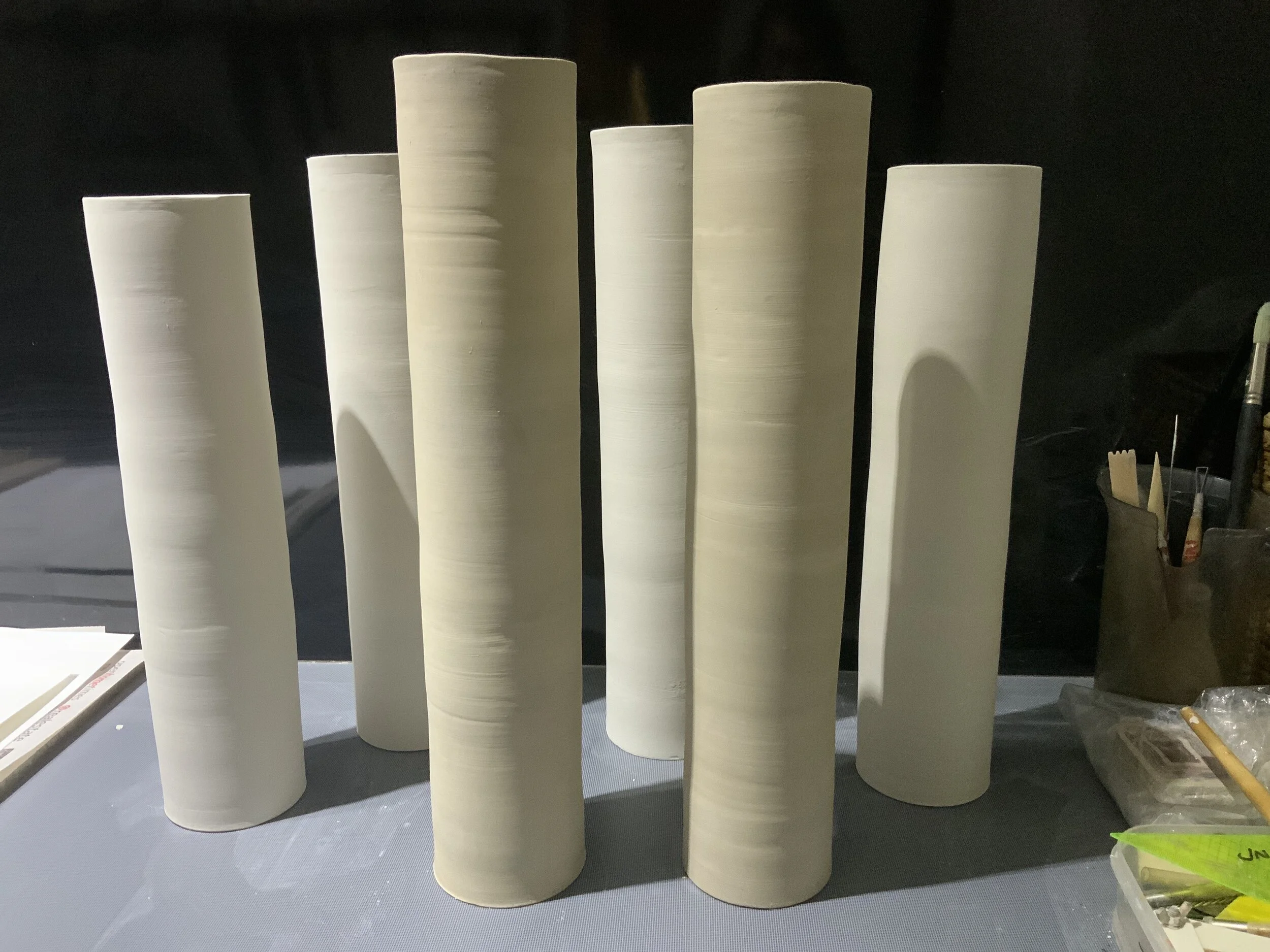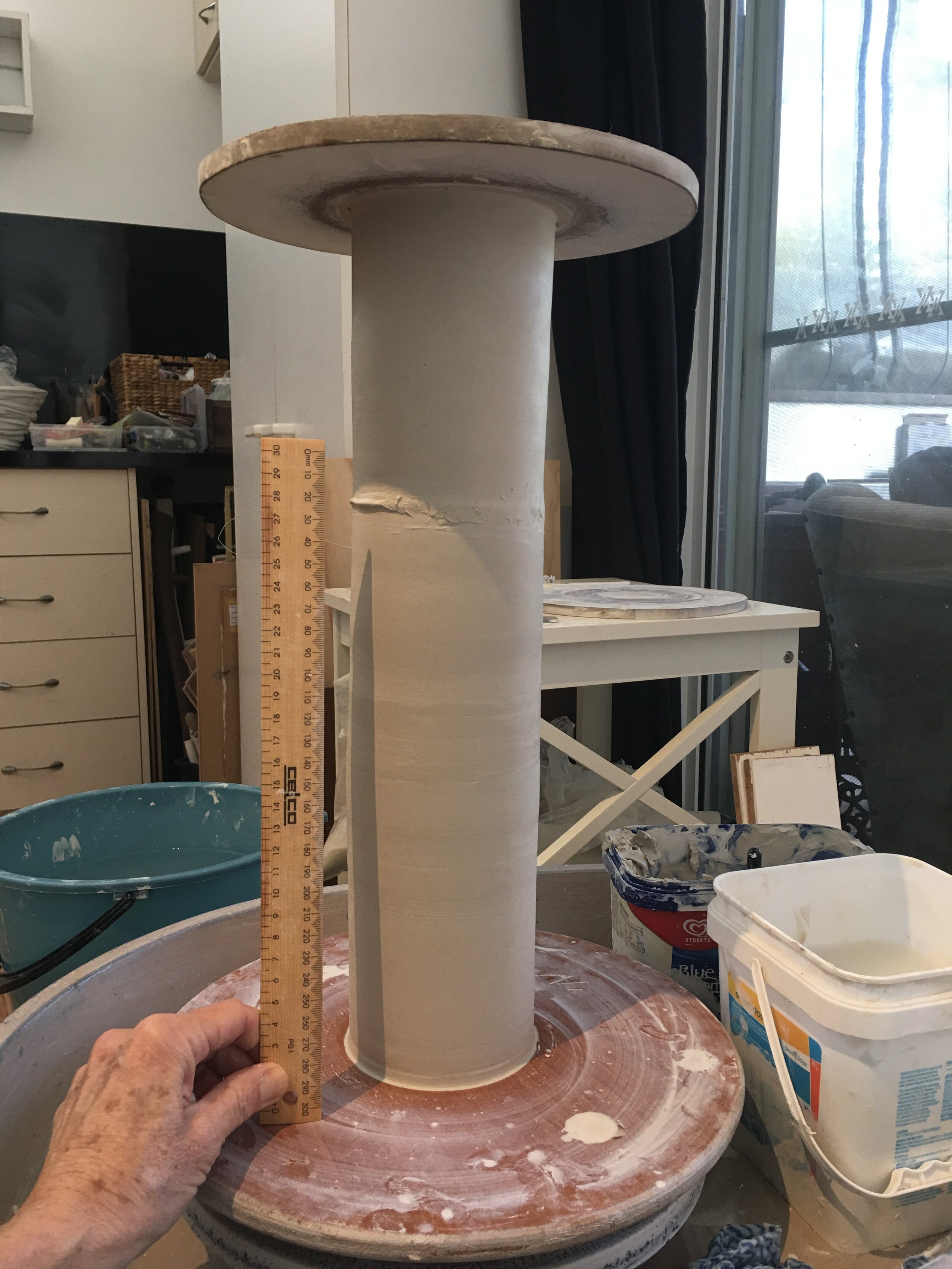Julie Nash’s artistic focus has been a perfect match with The White Bluff Project. As a visual artist and teacher, specialising in ceramics, her focus has long been on making ceramic objects rich with associations of time and place, memories and emotions. Julie aims to emphasise connections between a specific location and its history, which by extension creates a discourse on environmental issues. That is The White Bluff Project in a nutshell and Julie has thrown herself wholeheartedly into the project, particularly the collaborative opportunities that have been created with our science participants.
In particular, Julie has spent valuable time learning about and studying White Bluff’s marine environment with Dr Karina Hall. You can see Karina’s profile piece here and our news page has a longer story about one of the amazing scientific discoveries made as part of their research - an “enormously” rare find of exuviae from a barnacle.
“The interactions Jo [Elliott, another of the project’s artists], and I have had with Karina Hall have been mind blowing. I am so thankful for her time and knowledge and the way she has shared that with us. Taking us into the field collecting specimens and then back to her laboratory to study them under a microscope was an amazing experience that has given me a wider understanding of the unseen world of microorganisms that are found beneath the surface of our oceans.
“Since those field trips, I have done further research into the world of plankton, discovering facts like: Phytoplankton provide 50% of the planets oxygen and Zooplankton like copepods are believed to outnumber insects. Together they form an important part of oceanic food chains but unfortunately are being affected by global warming.
“I have really enjoyed studying and drawing the many species found in our local waters and I hope we can educate more people about these important creatures.”
Julie has been a practicing and exhibiting artist for 20 years. In recent years, her work has been selected for the Still Salon, Clunes Ceramic Award, the North Sydney Art Prize and the Jacaranda Acquisitive Drawing Award.
In 1994, Julie and her husband moved to Coffs Harbour. She began making and selling artwork at local markets. She also immersed herself in community-based art projects and returned to study, completing a Cert IV in Ceramics at Coffs Harbour TAFE. This began her lifelong dream of working with clay. Julie’s early work centred around functional wheel thrown forms and press moulded plates, painted with underglaze designs. This soon turned to slip cast forms which were then carved or covered with botanical drawings done with oxide pencil.
Since 2003, Julie has exhibited her work in Regional art galleries including: Armidale Art Gallery, Coffs Harbour Regional Gallery, Woolgoolga Art Gallery and the Nexus Art Gallery in Bellingen. In 2013 Julie exhibited her work in Clay on Display at the Royal Easter Show, Sydney and in 2017 Julie collaborated with conceptual artist Jeremy Sheehan on the work ‘Rise and Fall” for Sculpture by the Sea. This work consisted of 7 large sculptures, covered in clay, which were positioned on the rock face overlooking Tamarama Beach. Jeremy is also participating in the White Bluff Project and his profile is on our news page, here.
Another of Julie’s pieces that resonates with The White Bluff Project is her work “Axed to Extinction” which was awarded the Open Handformed & Sculpture Award in the 50th National Pottery Award at Hazelhurst Gallery, Sydney.
The artwork Julie produced was a series of ceramic axes, embedded and etched with the leaves, fruits and forms of the Moonee Quassia. You can view it on her website here.
“The Moonee Quassia is a small native shrub in the areas around Moonee, Sapphire and Emerald Beach. The plant is now critically endangered due to urban development and more recently agricultural development. The main culprit is our prized blueberries, which now grow extensively in the hinterland. ”
While Julie’s botanical interests are centred around plant structures, life cycles and seasonal growth, for the White Bluff Project, this interest has extended to the world of plankton and the myriad of undersea life found off our coast.
“Plankton are the most diverse and ancient organisms on earth. These mysterious, microscopic organisms float in ocean currents around the world, providing invaluable benefits to the planet. They have been abundant in Australian oceans, especially copepods which are believed to outnumber insects. However, climate change from carbon emissions is increasing ocean temperatures and acidity, resulting in devastating effects on plankton numbers, growth and size. These precious organisms need to be protected to sustain a healthy marine ecosystem and to supply us with enough oxygen to survive.”
In terms of her practice, Julie is very much an experiential artist. After spending time in the environment sketching and collecting specimens, Julie develops her designs only after careful consideration to positive and negative space. She uses the ceramic surface like a canvas, initially adding the drawing and then carving and texturing to create the 3-dimensional image. She prefers not to add glaze to the outer surfaces in order to keep more definition. Instead she uses stains and oxides to add colour and tone. It has resulted in a diverse and fascinating body of work for The White Bluff Project exhibition.
“I would just like to comment on how it’s been an amazing journey working on The White Bluff Project so far. The collaborations with scientists and artists have been so inspirational and the results are developing into what will be an interesting and educational exhibition.”
